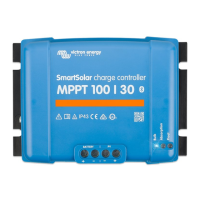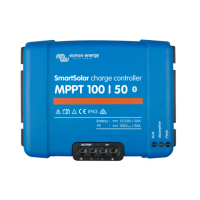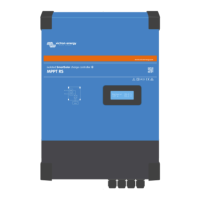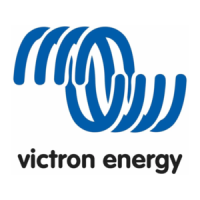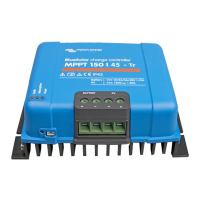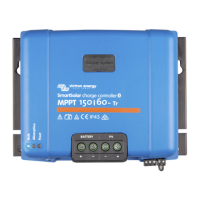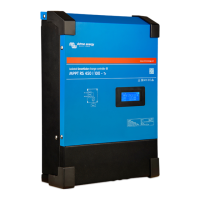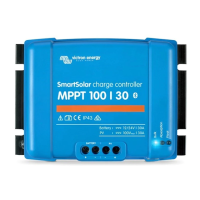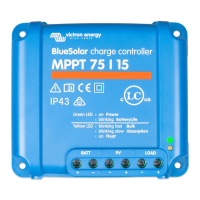• To connect to a monitoring device, such as a GX device or the GlobalLink.
• To connect with the VictronConnect app.
• For external control.
Special cables or interfaces are needed to connect to this port:
• VE.Direct cable - used to connect to a GX device or the GlobalLink.
• VE.Direct to USB interface - used to connect via USB to the VictronConnect app.
• VE.Direct Bluetooth Smart dongle - used to connect via Bluetooth to the VictronConnect app.
• VE.Direct TX digital output cable - used for streetlight control or to create a virtual load output.
• VE.Direct non inverting remote on/off cable - used to remotely switch the solar charger on or off.
3.8. Load output
The solar charger is equipped with a virtual load output.
3.8.1. Virtual load output
A virtual load output can be established to compensate for the absence of a physical load output in the solar charger.
To create a virtual load output:
• Use the VE.Direct TX cable and enable it to act as a virtual load output via the VictronConnect App RX port function. Refer to
the RX port settings [27] chapter.
The virtual load output can be set up within the VictronConnect app and controlled using battery voltages or the BatteryLife
algorithm. For details on the configuration process, please consult the Load output settings [22] chapter.
3.8.2. BatteryLife
This chapter only applies if the virtual load output is used.
When the solar charger is not able to recharge the battery to its full capacity within one day, the result is often that the battery will
continually be cycled between a ‘partially charged’ state and the ‘end of discharge’ state. This mode of operation (no regular full
recharge) will destroy a lead-acid battery within weeks or months.
The BatteryLife algorithm will monitor the state of charge of the battery and, if needed, day by day slightly increase the load
disconnect level (i.e. disconnect the load earlier) until the harvested solar energy is sufficient to recharge the battery to nearly the
full 100%. From that point onward, the load disconnect level will be modulated so that a nearly 100% recharge is achieved about
once every week.
3.9. Battery charging
3.9.1. Adaptive 3-stage battery charging
The solar charger is a 3-stage charger. The charge stages are: Bulk – Absorption – Float.
Bulk
During the bulk stage, the solar charger delivers the maximum charge current, to rapidly charge the batteries. During this stage,
the battery voltage will slowly increase. Once the battery voltage has reached the set absorption voltage, the bulk stage stops and
the absorption stage commences.
Absorption
During the absorption stage, the solar charger has switched to constant voltage mode. The current flowing to the battery will
gradually decrease. Once the current has dropped below 2A (tail current), the absorption stage stops and the float stage will
commence.
When only shallow discharges occur the absorption time is kept short. This is to prevent overcharging of the battery. But if the
battery was deeply discharged, the absorption time is automatically increased, to make sure that the battery is fully recharged.
Float
During the float stage, the voltage is reduced, and the battery's fully charged state is maintained.
MPPT solar charger manual
Page 7 Features
